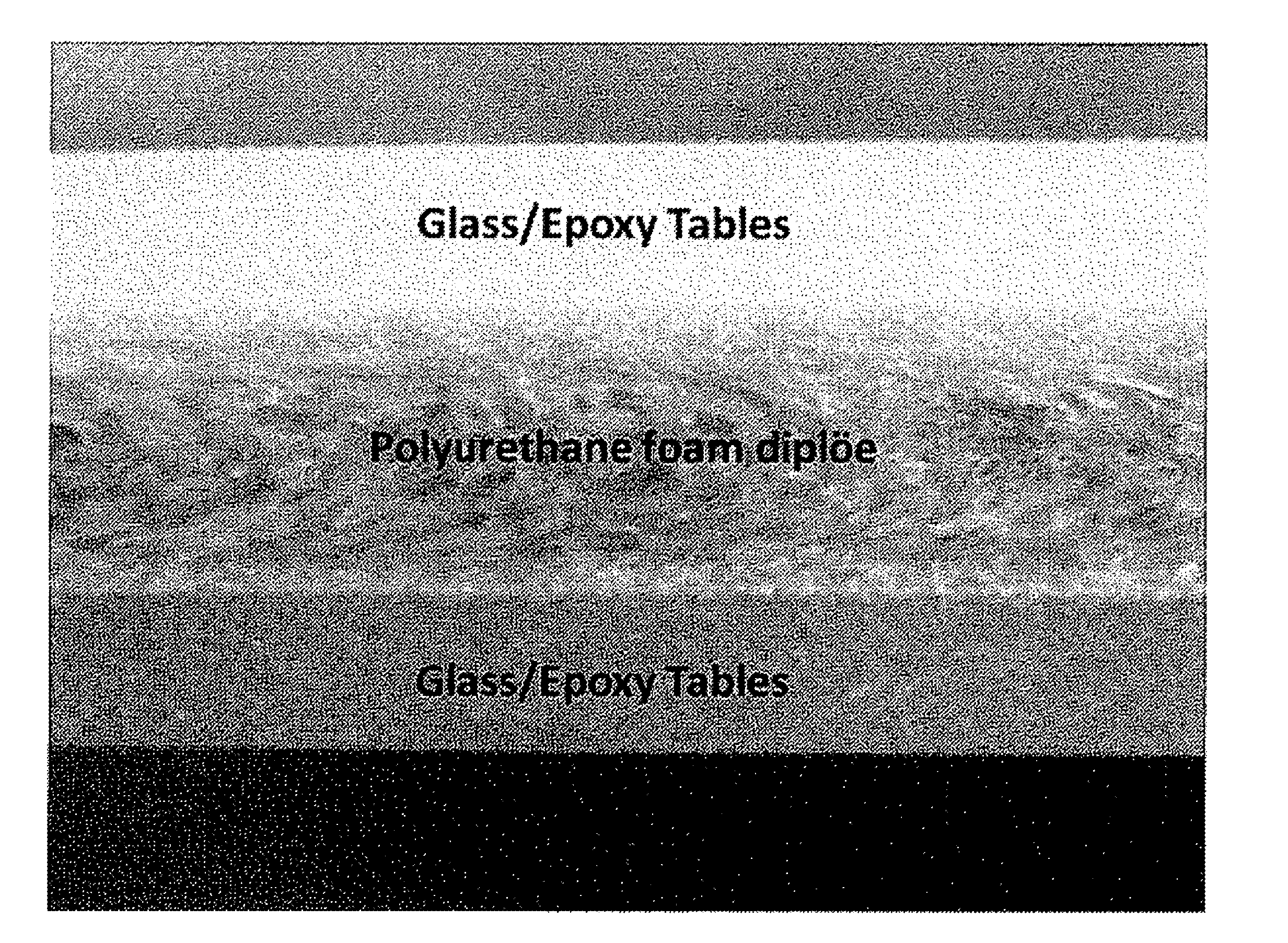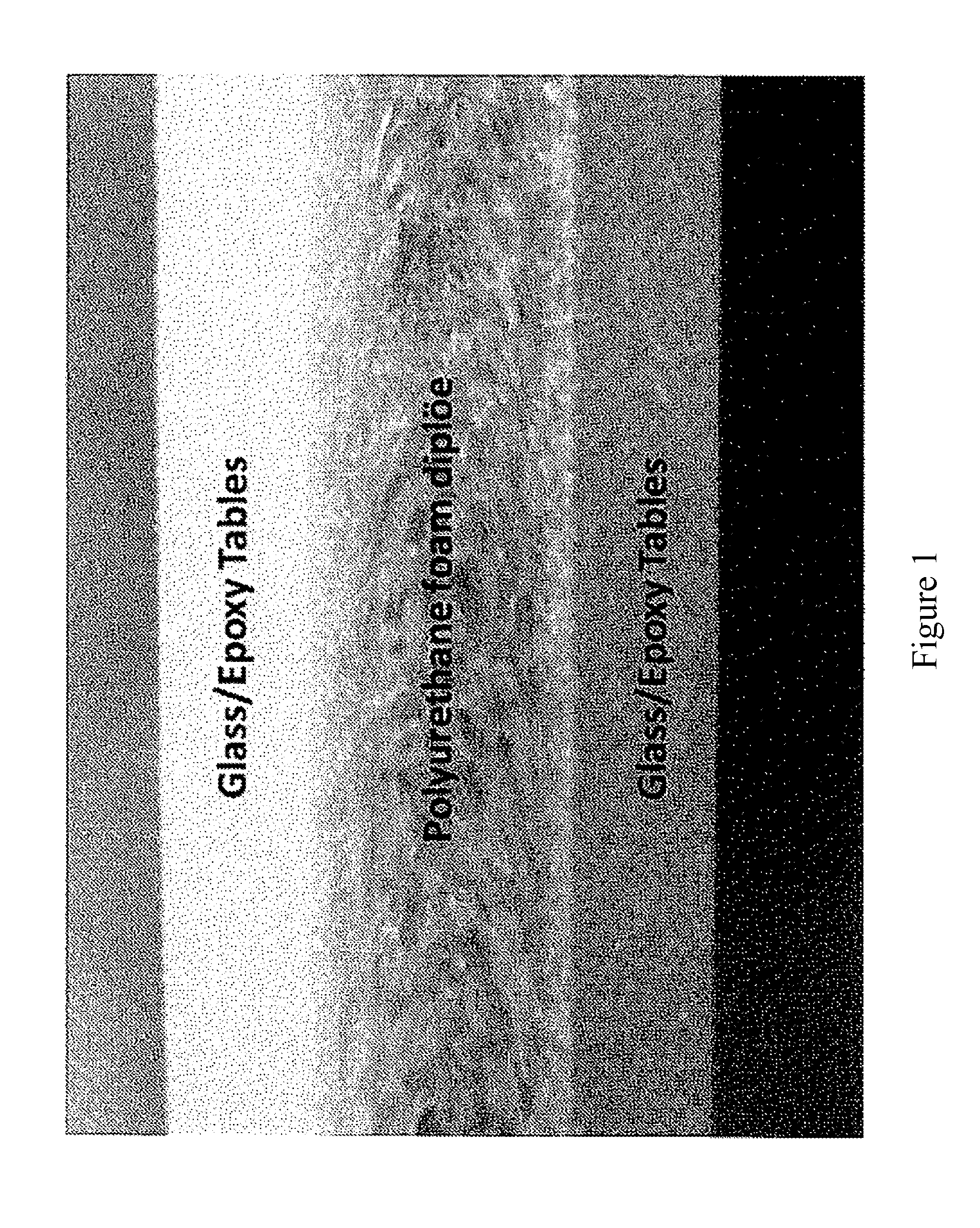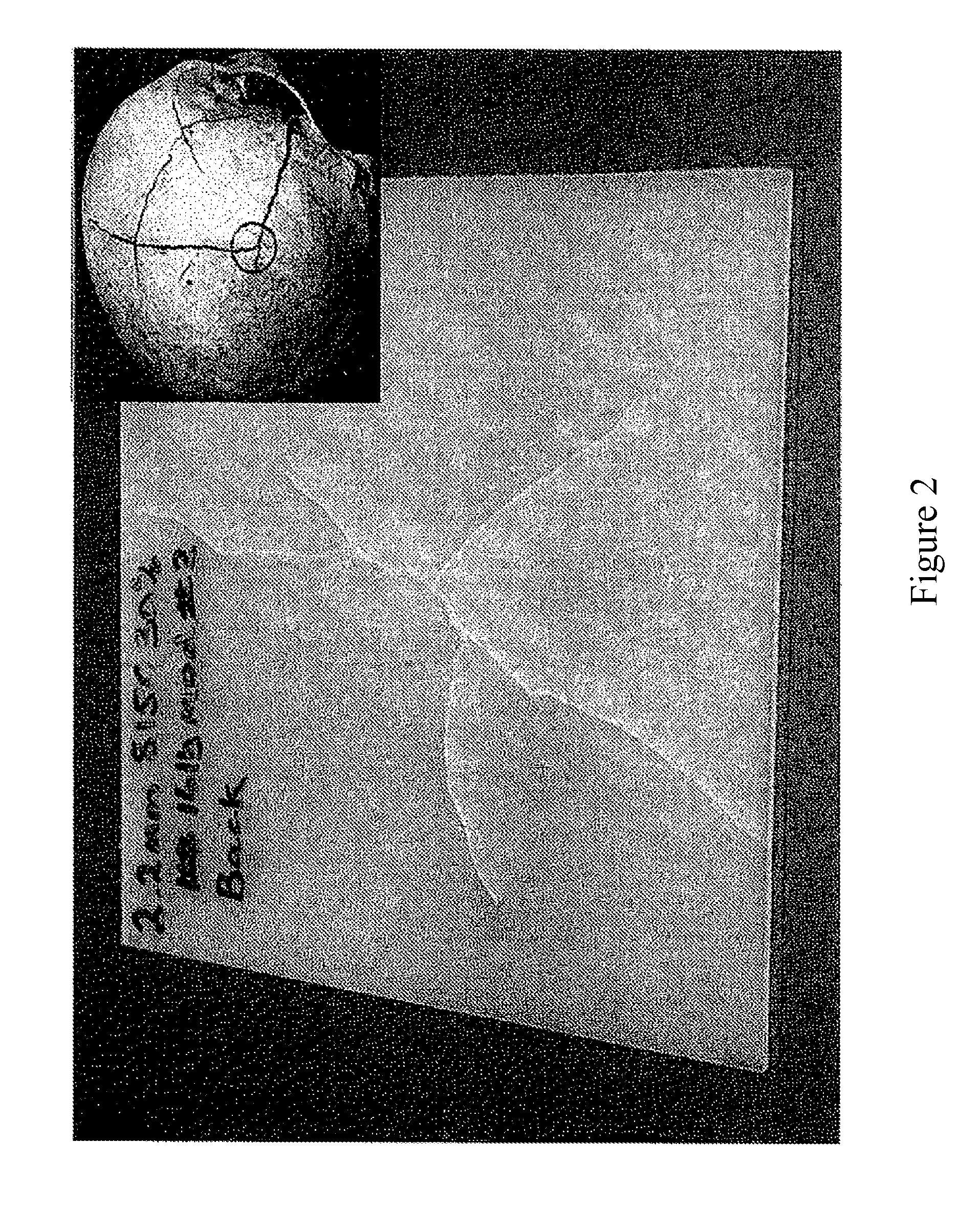Cranial Bone Surrogate and Methods of Manufacture Thereof
a technology of cranial bone and surrogate, which is applied in the field of cranial bone surrogate, can solve the problems of not knowing how to manufacture such a composite, and measurement cannot be made with real or live specimens
- Summary
- Abstract
- Description
- Claims
- Application Information
AI Technical Summary
Benefits of technology
Problems solved by technology
Method used
Image
Examples
example 1
[0056]This example was conducted to demonstrate a method for manufacturing the surrogate multilayered material. It was also conducted to demonstrate that the surrogate multilayered material has properties that are proximate to the properties displayed by the cranial bone.
[0057]Aluminum molds having dimensions of 61 / 2 inches×13¾ inches×0.0080 inches (2 millimeters) were injected with an epoxy mixture comprising EPON 815C® / EPIKURE 3234®. Milled glass fibers having an average length of 1 / 16 inch were mixed into some of the epoxy samples that were placed in the aluminum molds. The properties of the outer fibrous layers (i.e., the tables) and the surrogate multilayered material is shown in the Table 1 below.
[0058]The filled molds were then cured at 90 pounds per square inch (0.62 MPa) for four hours. The cured epoxy panels were removed from the molds and trimmed into 15 centimeters×15 centimeters squares.
[0059]The urethane material (obtained by US composites) having a free rise density o...
PUM
| Property | Measurement | Unit |
|---|---|---|
| Time | aaaaa | aaaaa |
| Pressure | aaaaa | aaaaa |
| Pressure | aaaaa | aaaaa |
Abstract
Description
Claims
Application Information
 Login to View More
Login to View More - R&D
- Intellectual Property
- Life Sciences
- Materials
- Tech Scout
- Unparalleled Data Quality
- Higher Quality Content
- 60% Fewer Hallucinations
Browse by: Latest US Patents, China's latest patents, Technical Efficacy Thesaurus, Application Domain, Technology Topic, Popular Technical Reports.
© 2025 PatSnap. All rights reserved.Legal|Privacy policy|Modern Slavery Act Transparency Statement|Sitemap|About US| Contact US: help@patsnap.com



